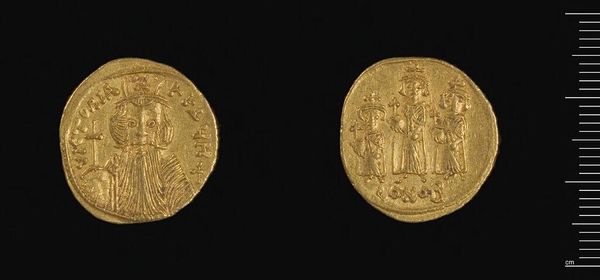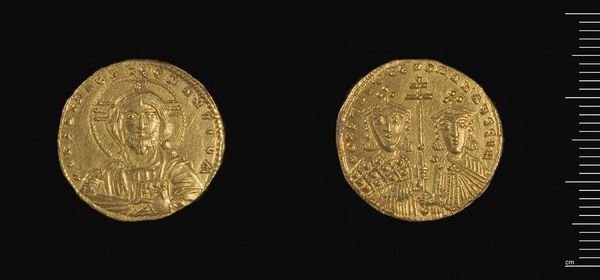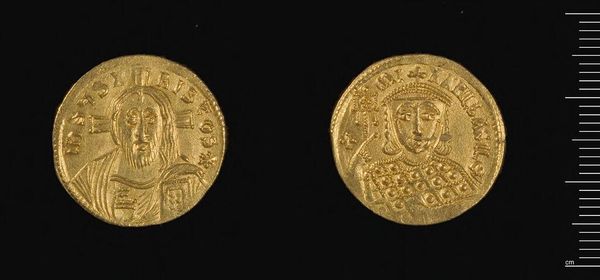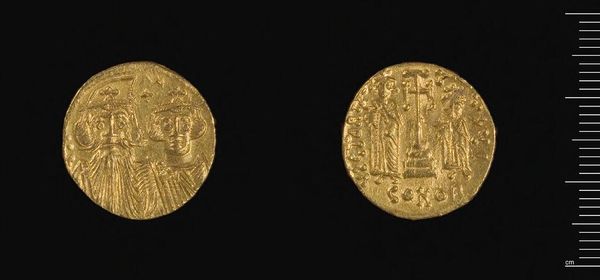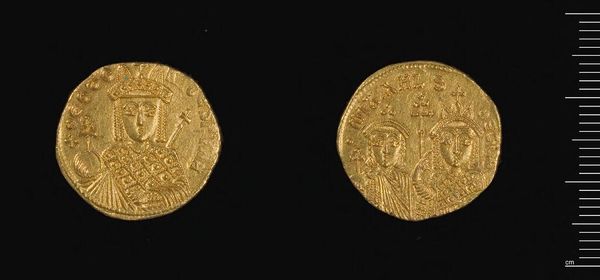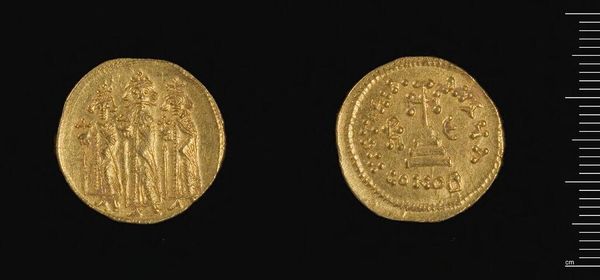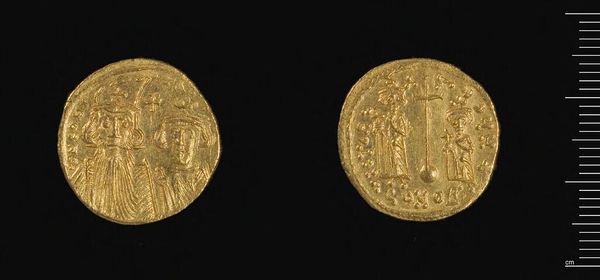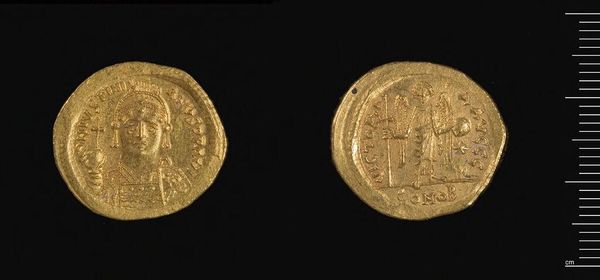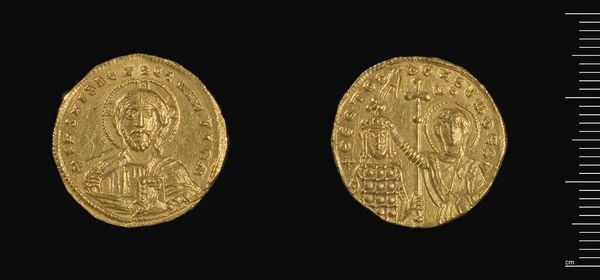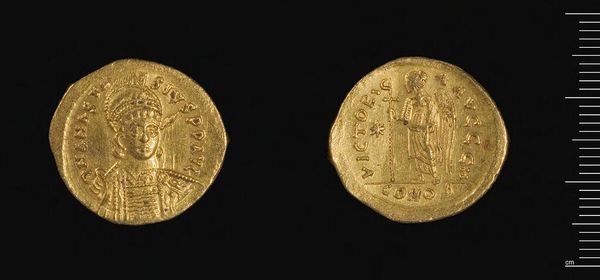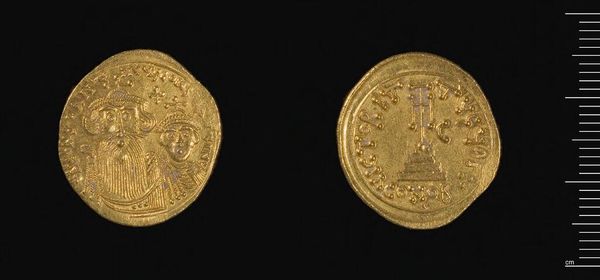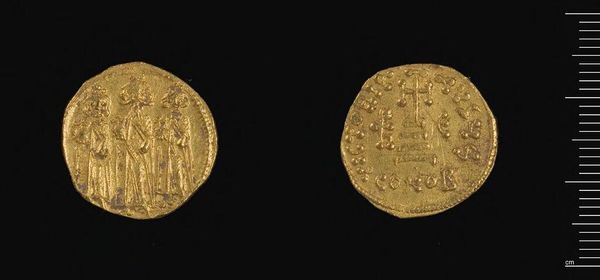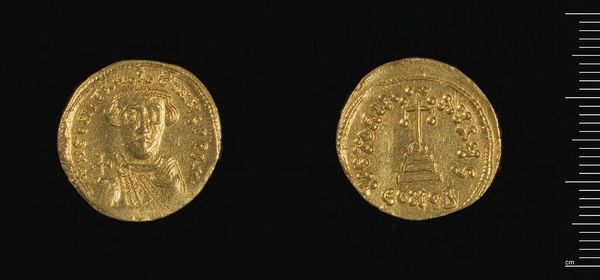
Dimensions: 4.35 g
Copyright: CC0 1.0
Curator: Looking at this small, golden object, I’m immediately struck by its weightiness, both literally and figuratively. Editor: Indeed. This is a Solidus of Constantine VII, a Byzantine coin now held at the Harvard Art Museums. Its small size belies its significance as a potent symbol of imperial power. Curator: It's fascinating to see how such a tiny object was used to project authority. The depiction of Christ on one side, and Constantine VII with his co-ruler Romanos II on the other, is so deliberate. Editor: Absolutely. The coin presents a clear, if visually compressed, hierarchy. The image of Christ legitimizes the rule of Constantine. And the pairing with Romanos underscores dynastic continuity. But these were also times of great instability, so these images attempt to quell social and political anxieties. Curator: It also served a practical purpose, circulating within the Byzantine economy and beyond, spreading not just wealth but also the image of the emperor. Editor: And as a portable object, it carried cultural capital far beyond the borders of the empire. Curator: A remarkable testament to the power of imagery in shaping perceptions of power and governance. Editor: A potent reminder that even the smallest artifacts can tell expansive stories about empire, identity, and belief.
Comments
No comments
Be the first to comment and join the conversation on the ultimate creative platform.
